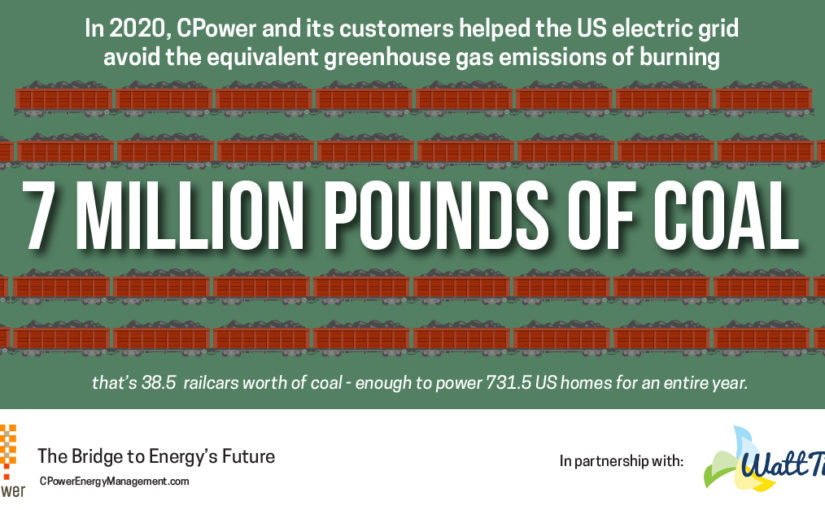CPower and WattTime’s Historic Partnership Allows Carbon-Reduction Benefits of Demand-Side Energy Management to Finally be Qualified

CPower’s President and CEO, John Horton, has long held a vision for how his company can help bridge the present and future as the electrical grid makes its low-carbon energy transition.
A leading energy solutions provider in North America, CPower has more than 1,700 customers across five deregulated energy markets in the country. Combined, those customers provide nearly 12,000 MW of electric load each year when the grid needs it most.
Formed in 2007, CPower has always known the demand-side efforts they facilitate for customers have an impact on carbon reduction.
That crucial megawatts are delivered to the grid via the demand side in times of need negates that load from having to be delivered from the supply side by way of dirty peaker plants.
The question that’s burned in the mind of CPower and other decarbonization-minded energy managers has always been exactly how much are carbon emissions reduced by demand-side energy management?
A recent partnership between CPower and nonprofit WattTime has finally delivered a quantifiable answer to this question.
Since its founding in 2014, WattTime’s mission has been to help customers achieve emissions reductions without compromising cost, comfort, and function.
Like CPower and its customers, WattTime has continued to ask itself a burning question of its own: how clean is the energy I’m using right now?
To answer the question, dozens of software coders set to work in a hackathon. Since then a team of more than 200 volunteers across many disciplines contributed their skills, backed by efforts from a host of PhDs and researchers from the University of California, Berkeley, and Carnegie Mellon University.
The result was WattTime’s prized invention, a unique intelligent software platform called Automated Emissions Reduction (AER) which has since become one of the premier climate-tracing technologies in the world.
AER proved to be CPower’s missing link, finally allowing for the effect their customer’s demand-side contributions have on carbon reduction to be quantified.
The results were impressive beyond their significance as a historical first and industry breakthrough.
In 2020, CPower customers curtailed their grid demand in nearly 20,000 events spread across six independent system operator (ISO) regions, totaling 11.5 GWh of load reduction. Based on WattTime’s analysis, this corresponded to an emissions reduction of nearly 7,000 metric tons of carbon dioxide on average for demand response events alone. This is equivalent to eliminating the greenhouse gas (GHG) emissions associated with over 7 million pounds of coal burned.
CPower’s energy efficiency (EE) monetization had on carbon reduction proved to be even more grandiose. In 2020, CPower helped its customers in PJM, the largest wholesale energy market in the world, monetize more than 520 MW of permanently reduced demand in the region’s capacity market.
According to WattTime’s analysis, that permanent load reduction resulted in 1.8 million metric tons of carbon dioxide reduction, the equivalent of 2 billion pounds of coal burned.
CPower’s John Horton believes the partnership with WattTime is one that will play a pivotal role in building a bridge to America’s energy future.
“As a company, our demand-side management solutions span demand response, energy efficiency, distributed generation, energy storage, and peak load reduction. They all have roles to play decarbonizing power grids as part of the low-carbon energy transition,” Mr. Horton said.
“In partnership with WattTime, we’ll be exploring how we can deliver even stronger emissions-reduction benefits to our customers throughout North America.”



